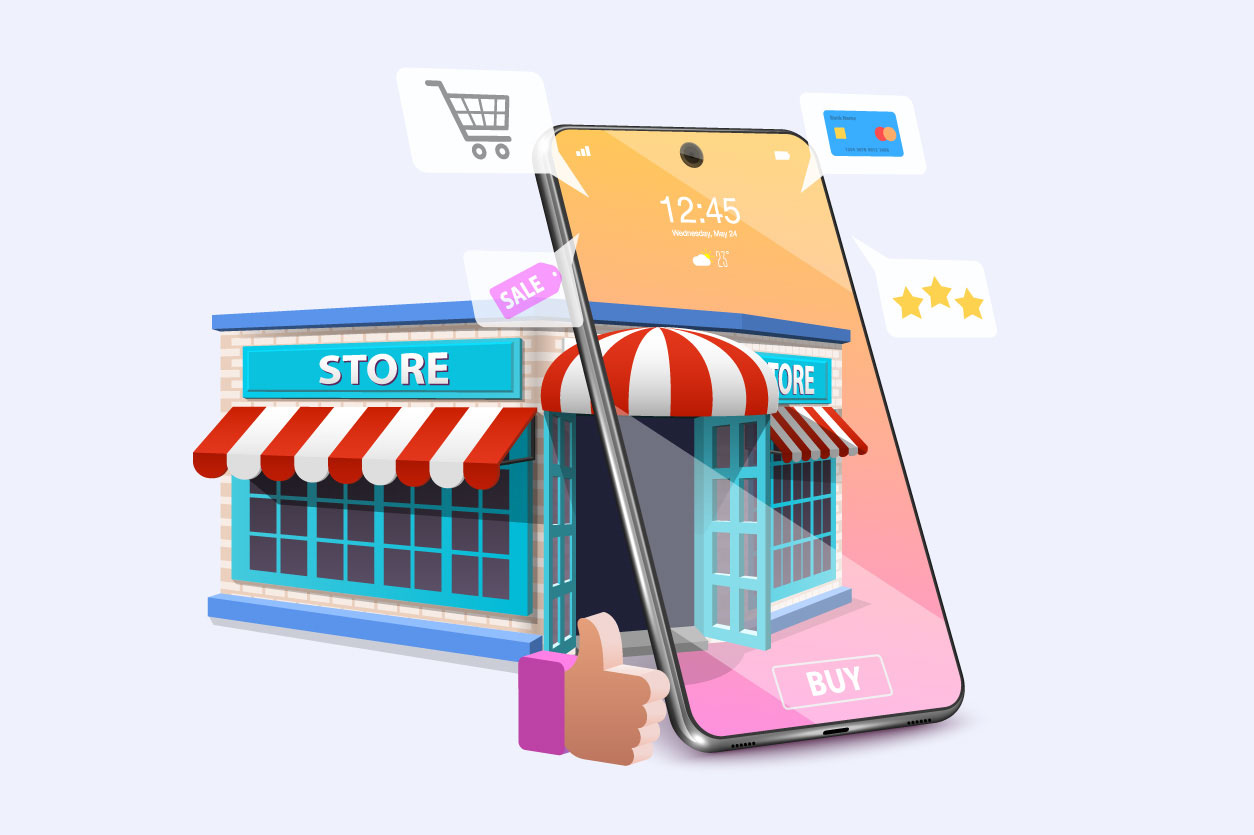Online shopping has transformed how we buy things. It’s fast and convenient.
The world of online shopping is vast and exciting. With a few clicks, you can purchase almost anything from anywhere. This digital marketplace offers endless choices, from clothes to electronics. Shopping online saves time and often money, making it a favorite for many.
Online shopping has become a staple in our modern lives. It is no longer just a trend but a necessity for many. The ease of browsing through countless products from the comfort of your home is unmatched. Online shopping also offers the advantage of comparing prices and reading reviews before making a purchase. With secure payment methods and fast delivery options, it’s no wonder more people are turning to online shopping. This blog will explore the many aspects of online shopping, providing tips and insights to make your experience even better.
Evolution Of Online Shopping
Online shopping has transformed over the years. From a simple concept to a major industry. It has made shopping easy and convenient. This evolution has been driven by many factors. Let’s explore how online shopping began and how it has grown.
Early Beginnings
The idea of online shopping started in the 1970s. Back then, computers were not common in homes. Yet, the idea was promising. In 1979, Michael Aldrich invented online shopping. He connected a television to a transaction computer. This was the first step toward buying online. The first true online store launched in 1994. It was called “NetMarket.” People could buy books and CDs online. This was a big change in how people shopped.
Technological Advancements
With the internet becoming popular, online shopping grew fast. In the late 1990s, more people had home internet. Websites like Amazon and eBay started to gain popularity. They offered a wide range of products. Secure payment systems made online transactions safer. Smartphones changed online shopping again. People could shop anytime, anywhere. Apps and mobile-friendly sites made this possible. Voice assistants like Alexa also made shopping easier. You could order with just a voice command. These advancements have shaped online shopping. They made it a crucial part of daily life.

Credit: www.globalsign.com
Impact On Traditional Retail
Online shopping has transformed the retail landscape, affecting traditional stores. The convenience of digital shopping has reshaped customer habits. This shift has significant implications for brick-and-mortar outlets. Understanding these impacts is crucial for businesses aiming to thrive in the digital age.
Decline Of Brick-and-mortar
Brick-and-mortar stores face challenges from online competitors. Foot traffic in malls has decreased. Many consumers prefer shopping from home. This trend has led to store closures in many areas. Traditional retailers struggle with maintaining high rent and overhead costs. The rise of e-commerce has changed consumer expectations. Shoppers now seek quick and easy purchasing options.
Adapting To The Digital Shift
Retailers are adapting to survive in the digital era. Many stores now offer online shopping options. Some integrate technology to enhance in-store experiences. Click-and-collect services combine online and physical shopping. Retailers use social media to reach new customers. Offering personalized online experiences is becoming standard. Businesses that adapt can still thrive amidst these changes.
Benefits For Consumers
Online shopping has transformed the way consumers purchase goods. It offers several benefits, making it an attractive option for many. From the ease of access to a vast range of products, online shopping caters to diverse consumer needs. Below, we explore the main benefits that entice consumers to shop online.
Convenience And Accessibility
Shopping online means you can shop anytime. Day or night. There’s no need to travel to stores. This saves time and effort. People with mobility issues find it easier. They can shop from home. Also, online stores are open 24/7. Perfect for those with busy schedules.
Variety And Choice
Online platforms offer a wide range of products. From clothing to electronics. Consumers can explore numerous brands. All in one place. This variety allows them to compare products easily. Find the best deals. Physical stores can’t match this level of choice. Shoppers can also access global markets. Purchase items not available locally.

Credit: redfernent.com
Challenges In E-commerce
Online shopping is booming. Yet, e-commerce faces many challenges. These issues can affect both sellers and buyers. Understanding these challenges is key to improving online experiences.
Security Concerns
Many shoppers worry about security. Hackers target online stores. They steal personal information. Customers fear credit card fraud. Trust is essential in e-commerce. Secure payment systems help build trust. Encryption is a must for online stores. It protects customer data.
Logistics And Delivery Issues
Delivery can be tricky. Late shipments upset customers. Fast delivery is expected. Traffic, weather, and other delays can occur. Inventory management is crucial. It prevents stock shortages. Accurate tracking helps keep customers informed. Reliable logistics are vital for e-commerce success.
Innovative Technologies In Online Shopping
Online shopping has transformed how people purchase goods. New technologies make shopping easier and more engaging. These advancements enhance user experience and boost satisfaction.
Shoppers now encounter personalized recommendations and immersive browsing experiences. This section explores two key technologies reshaping online shopping.
Ai And Personalization
AI analyzes user behavior to offer tailored product suggestions. It studies previous purchases and browsing history. This helps in predicting what a customer might like.
AI-driven personalization enhances customer satisfaction. Shoppers feel valued when they see relevant options. This approach also saves time and simplifies decision-making.
Personalized emails and notifications keep users informed. They receive alerts about new arrivals matching their interests. This increases engagement and encourages repeat visits.
Virtual And Augmented Reality
Virtual reality allows customers to explore products in a 3D space. They can view items from different angles. This offers a real-world shopping experience from home.
Augmented reality adds digital elements to the real world. Shoppers can visualize products in their environment. This helps in making informed purchasing decisions.
AR features reduce uncertainty about fit and style. Customers can try before buying. This technology minimizes returns and boosts confidence in purchases.
Role Of Social Media
Social media has transformed online shopping in many ways. It connects brands with customers instantly. Platforms like Instagram and Facebook are now shopping hubs. They offer a personalized shopping experience. Brands use social media to reach wider audiences. Customers discover products through posts and ads.
Influencer Marketing
Influencer marketing plays a huge role in online shopping. Influencers have loyal followers who trust their recommendations. Brands partner with influencers to showcase their products. This builds trust and boosts sales. Influencers create content that resonates with their audience. Their posts often include direct links to products. This simplifies the purchasing process.
Social Shopping Platforms
Social shopping platforms blend social media with e-commerce. They allow users to shop without leaving the app. Features like “buy now” buttons make shopping seamless. These platforms offer real-time reviews and feedback. Customers can see what others think before buying. Social shopping is interactive and engaging.
Sustainability In Online Retail
Online shopping has transformed retail. As consumer habits shift, sustainability becomes crucial. Retailers are making eco-friendly choices. They aim to reduce environmental impact. Sustainable practices attract conscious consumers.
Online stores focus on sustainable solutions. They prioritize eco-friendly packaging and ethical supply chains. These efforts show commitment to the planet. Let’s explore how they achieve this.
Eco-friendly Packaging
Packaging waste harms the environment. Online retailers are adopting greener options. Many use recycled materials for boxes and bags. Biodegradable packaging is gaining popularity. It breaks down quickly after use. Some brands offer reusable packaging. This reduces waste significantly.
Eco-friendly packaging enhances brand reputation. Customers appreciate green initiatives. It encourages them to shop more sustainably. Less waste means a healthier planet.
Ethical Supply Chains
Ethical supply chains are vital for sustainability. Online retailers ensure products are sourced responsibly. They work with fair-trade suppliers. This supports local communities and workers. Ethical sourcing reduces exploitation. It promotes fair wages and safe working conditions.
Transparency in supply chains builds trust. Customers want to know product origins. Ethical practices attract mindful shoppers. They prefer brands with clear values. Sustainable supply chains protect the environment.
Online retailers strive for sustainability. Eco-friendly packaging and ethical supply chains are key. These efforts benefit the planet and people. Sustainability in retail is here to stay.

Credit: www.europarl.europa.eu
Future Trends
Online shopping is embracing AI for personalized experiences. Virtual reality enhances product exploration, making it more immersive. Sustainable packaging and eco-friendly practices are gaining importance.
As we dive into the world of online shopping, it’s clear that the landscape is constantly evolving. The future trends in this space are not just about technology, but also about how these advancements are shaping your shopping experience. Let’s explore some of these trends that are set to redefine how you shop online.Rise Of Mobile Commerce
More people are using their phones to shop than ever before. Have you ever found yourself making a purchase while waiting for your coffee? You’re not alone. This growing trend is called mobile commerce, or m-commerce, and it’s making shopping easier and more convenient. Retailers are optimizing their websites for mobile devices. They’re also creating apps that make it even quicker to browse and buy. Fast loading times and simple checkouts are becoming the norm. This trend means you can shop on the go, anytime, anywhere. With just a few taps, you can compare prices, read reviews, and make purchases. It’s about making the shopping experience as seamless as possible for you.Integration Of Blockchain
Blockchain technology is not just for cryptocurrencies anymore. It’s making waves in online shopping too. Have you ever worried about the security of your online transactions? Blockchain offers a solution. By using blockchain, retailers can ensure your personal and payment information is secure. It provides a transparent and tamper-proof way to handle transactions. This means more trust between you and the retailer. Moreover, blockchain can help in tracking products from manufacturer to your doorstep. You can see exactly where your item has been and ensure it’s authentic. This level of transparency is becoming a key factor in where consumers like you choose to shop. As these trends continue to grow, they promise a more convenient, secure, and transparent shopping experience. How will you adapt to these changes in your shopping habits? Are you ready to embrace the future of online shopping?Frequently Asked Questions
What Is The Best Place To Buy Things Online?
Amazon is a top choice for buying things online. It offers a wide range of products, competitive prices, and reliable delivery. Other popular options include eBay and Walmart, which provide diverse selections and user-friendly platforms. Always compare prices and check reviews for the best deals.
What Is The Most Reliable Online Shopping Site?
Amazon is widely considered the most reliable online shopping site. It offers a vast product selection and trusted customer service. Many users appreciate its fast shipping and easy returns. Amazon’s customer reviews also help in making informed purchasing decisions.
What Is The Most Popular Online Shopping Site In Usa?
Amazon ranks as the most popular online shopping site in the USA. It offers a wide range of products and reliable delivery service. Known for its user-friendly interface, competitive prices, and excellent customer service, Amazon attracts millions of shoppers daily.
What Is The Cheapest Online Shopping Site?
Amazon and eBay offer competitive prices for online shopping. Sites like AliExpress and Wish often provide cheaper options. Always compare prices and check customer reviews. Deals and discounts may vary.
Conclusion
Online shopping is convenient and time-saving. It offers a wide range of products. You can shop from anywhere at any time. No need to travel to stores. Online deals often save money. Easy returns make it stress-free. Compare prices with a few clicks.
Read reviews before buying. Secure payments offer peace of mind. It’s a modern way to shop. Perfect for busy lifestyles. Online shopping continues to grow. Embrace its benefits and enjoy shopping.


